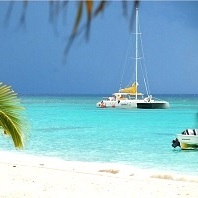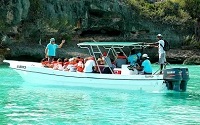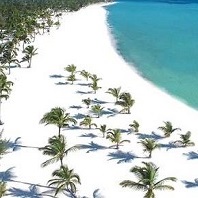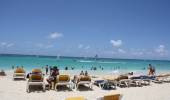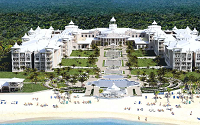Dominican Larimar Jewelry & Other Larimar
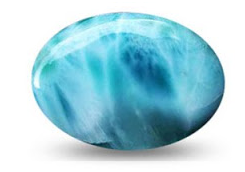 Larimar is a beautiful blue and white stone with a marbled appearance, that is only found in the Dominican Republic! It is considered a semi-precious stone and it is often made into some of the most beautiful jewelry you'll find anywhere. The larimar used to make jewelry is also set in silver, with the very best pieces being set in gold. Since it is so beautiful and only found in the Dominican Republic, many visitors put larimar on their "have to get" shopping list.
Larimar is a beautiful blue and white stone with a marbled appearance, that is only found in the Dominican Republic! It is considered a semi-precious stone and it is often made into some of the most beautiful jewelry you'll find anywhere. The larimar used to make jewelry is also set in silver, with the very best pieces being set in gold. Since it is so beautiful and only found in the Dominican Republic, many visitors put larimar on their "have to get" shopping list.
The discovery of Larimar
It is a popular believe that Larimar is discovered in 1974. Norman Rilling, a member of the Peace Corps of the United States and the Dominican Miguel Méndez, found a blue pectolite in the sea. Surprised by its color, they considered the possibility that the stone came from the land. They followed the trail up the river Bahoruco, until they reached the Checheses in the area of Los Chupaderos Mountains, about 10 kilometers outside the city of Barahona, where they discovered a rich mine containing the stones. The name Larimar comes from the contraction of 'Lari', the name of the daughter of the discoverer, and 'Mar', the Spanish word for 'sea', because the blue of this stone evokes the color of the sea.
However in reality, there is evidence that -already in 1916- Father Miguel Domingo Fuertes Loren of the Barahona Parish, requested the Ministry of Finance the concession of exploration and exploitation of the mine. But this was never approved.
The first evidence of this rare mineral found in small pebbles, were occasional deposits found on the beach in Bahoruco. They were deposited there by the floods of the river of the same name. There is evidence, that the beautiful blue color of this rock was noticed long ago. In fact, the Larimar Museum has samples from the 50's.
When buying Larimar...
Currently the amount of Larimar mined yearly hardly exceed 100 kg (220 lbs) and the value is higher than that of gold. If you can buy a piece of jewerly containing Larimar, cheaper than a comparable golden jewel, you must know there is something wrong.... Be aware...
What is Larimar
Larimar is a testament to the volcanic activity of the earth many millions of years ago. The island of Hispaniola began to form due to volcanic activity, emerging from the deep sea and, as experts say about 100 million years ago, first to emerge was the Sierra de Bahoruco, now in the southwest of the island.
The geological constitution of the island include volcanic rocks, known in geology by the name of andantes and basalts. The chemical components of the glowing solutions incandescent dripping from the magma were varied, and included minerals in the form of silicon components mixed with aluminum, sodium, calcium, iron, etc.. Among all this a very unique partnership was formed by nature: silicon-oxygen sodium and calcium components. They were formed at random concretions of small compact masses, possessing luster, in multiple color variations. The name is Pectolite (hydrated calcium silicon and acid sodium).
Deposits of this new mineral are found are different parts of the world (USA, Canada, England, Austria and India). But only in the province of Barahona one can mine the deposits of blue pectolite: larimar.

